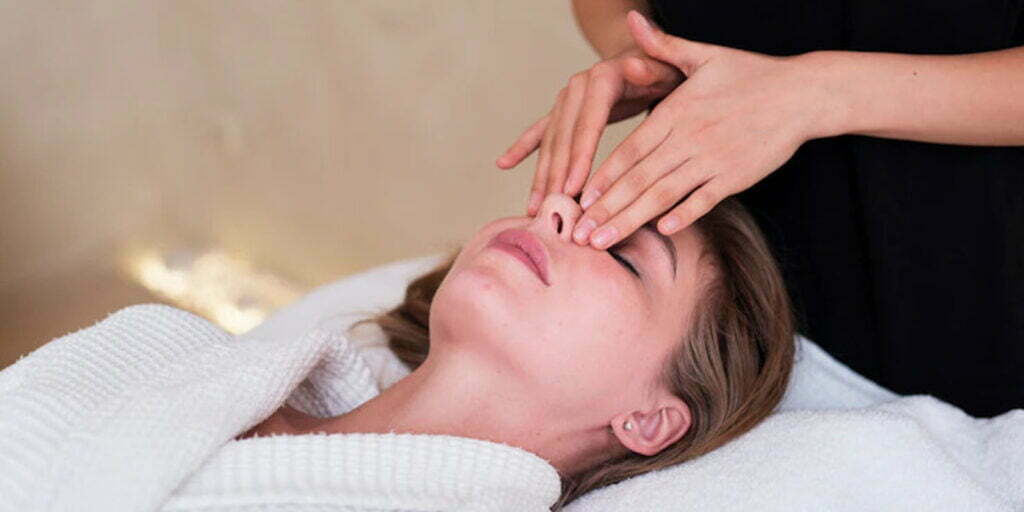
Detoxification Therapy
Safe. Scientific. Research-backed
3 Generations in Treating
Reproduced with kind permission from Dr. S. Indira Acharya
Detoxification therapy through Yoga Shatkarma
Human body is akin to a machine. It has to be well maintained for better efficiency. Wastes like mucus, gas, acid, sweat, urine and stool are produced in the body. The body may be left with some residual toxins that clog various channels causing discomfort. Hence periodical cleansing is essential
Shatkriya or Shatkarma are the cleansing techniques mentioned in Hatha Yoga Pradeepika. These practices activate almost all vital systems in the body such as digestive, respiratory, circulatory and nervous systems. These detoxification therapy processes are both preventive and curative.
Besides rejuvenating the body, the techniques keep the body ready for Yoga practice so as to derive optimum benefit from it. As the name implies there are six techniques.
Dhauti
Dhauti is the practice of cleaning the upper area of food pipe up to the stomach. It is done on an empty stomach in the early morning. It removes undigested food particles from the ingested food. These particles sticking to the stomach lining cause problems with digestion. Vamana Dhauti and Vastra Dhauti are the frequently adopted methods
Vamana Dhauti: Drink four to six glasses of tepid water with a little of salt added to it, early in the morning on an empty stomach.
Bend forward in standing position, insert the middle and the index fingers of the right hand into the mouth until they touch the uvula in order to induce a vomiting sensation. Bile and other toxic matters are vomited along with the saline water. Repeat the process until all the saline water is ejected.
Vastra Dhauti: Take a cotton cloth strip of 20-25 feet length and 2-3 inches width. Make it wet by dipping in saline water, insert it into the mouth and swallow carefully. When it is pulled out slowly, it cleanses the inner linings of the stomach and food pipe.
Dhauti has the benefit of cleaning the digestive tract of lingering food particles and extra mucus. The stomach cleansing process gives relief from excessive bile, constipation and gastric troubles. It also alleviates the problems like headaches, chronic cold, cough and asthma.It can be performed once a week or as and when needed.
It is not advisable for those suffering from high blood pressure, ulcers and heart trouble. Those suffering from hyperacidity should not use saline water. It should not be practised if the practitioner has any internal injury in the stomach or a sensitive stomach.
Basti
Basti is colon cleansing. It can as well be called enema in modern medical terminology. Jal Basti is the commonly used technique. The water which is pulled or pushed (in enema) churns around in large intestine and makes passage smooth for undigested food.
The best time for Basti is the early morning or evening when the stomach is empty. Basti helps to relieve indigestion, gastric troubles related to large intestine. However, those suffering from acute diarrhea, rectal polyps should be wary of practicing the technique.
Neti
It is cleansing the nasal passage. Many diseases and discomforts are caused by the accumulation of impurities in the nasal passage and throat. There are two approaches to Neti.
Jala Neti: It is the process of cleansing the air passage of the nostrils and throat using tepid saline water. Jala Neti pots are available in the market.
Put half a teaspoonful of salt in clean Jala Neti pot and fill it with lukewarm drinking water. In standing position tilt the head slightly to the right and insert the nozzle of the pot into the left nostril.
Let the water flow into it. Breathe through the mouth, allowing the water to flow out through the right nostril. Reverse the process by tilting the head to the left and let the water flow from the right to the left nostril. Perform Kapalabhati to dry the nostrils. It can be done daily until one gets rid of the problems like cold and sinusitis.
Sutra Neti: In Sutra Neti, a rubber catheter is used. Insert the catheter into one of nostrils and pull out from the throat and out of the mouth. Move it gently to and fro. The nasal passage is cleaned thus. Repeat the process for other nostril also.
The process relieves sore throat, cold, cough, sinusitis, migraine, allergies etc. It improves vision also. It is said that Neti also stimulates certain nerve centers in the upper nasal passage. It should be practised only in the morning. Sutra Neti should not be performed when the performer has sensitive mucus, a stuffed nose or any issue with central bone of the nose.
The process relieves sore throat, cold, cough, sinusitis, migraine, allergies etc. It improves vision also. It is said that Neti also stimulates certain nerve centers in the upper nasal passage. It should be practised only in the morning.
Sutra Neti should not be performed when the performer has sensitive mucus, a stuffed nose or any issue with central bone of the nose.
Nauli
It is a self-administered abdominal massage, using only the muscles of the abdominal wall. It is one of the difficult processes to master. Stand with feet about hip width apart. Keep hands on knees and body at about 45 degree angle.
Rotate the core internally by moving the abdominal muscles alternately in clockwise and anti-clockwise directions.
Nauli has three variations and can be learnt one after the other gradually. When the muscle is isolated to the left, it is called Vama Nauli and when it is isolated to the right it is called Dakshina Nauli. When both the left and right muscles are moved to the centre, it is called Madhya Nauli. In addition, rotation of the muscles is also practised.
Nauli helps in strengthening the abdominal and surrounding muscles. It tones up the abdomen and massages internal organs. The churning of the abdominal muscle cleanses stomach and small intestine.
It is beneficial for the digestive system and issues with indigestion can be effectively tackled with Nauli. It is not suggested for those with heart disease, hypertension or ulcers.
Trataka
Trataka is blinkless gazing. Also a meditation technique, it is called fixed eye gazing. There are two popular techniques to perform Trataka.
In one method, fix the gaze on a symbol placed at eye level, letting the mind be completely absorbed in the symbol while observing any thoughts or feelings that arise. Gaze until the eyes water, then close and relax the eyes.
In the alternate method, place a candle at arm's length. Look at the tip of the flame without blinking till tears start to flow. Then close the eyes and concentrate on the after-image, holding it as long as possible.
The gaze should be maintained for as long as one is comfortable. Gradually increase the duration. The eyes should be closed and rested after each exercise.
It strengthens the eye muscles, relieves eye strain and improves vision and concentration. It removes mental disturbance too. Due care should be taken as performing Trataka continuously for more than a month or two may lead to damage of the retina.
Kapalabhati
Though it is one of the six purification processes, it also is a kind of Pranayama. This is a respiratory exercise for the abdomen and diaphragm. The breathing is abdominal, controlling movements of the diaphragm, not involving the chest.
It is active exhalation and passive inhalation. Exhalation is short, rapid and strong. The process purifies the channels inside the nose and other parts of the respiratory system and the brain also is cleared.
Sit in a comfortable position, preferably in Padmasana. Exhale suddenly and quickly through both nostrils by producing a hissing sound. Inhaling should be automatic and passive. The air should be exhaled from the lungs with a sudden, vigorous inward stroke of the abdominal muscles.
The exercise should be done in three phases, each consisting of 20 to 30 strokes a minute. Small break can be taken in between. During the process, the thoracic muscles should be kept contracted. Conclude the process with slow breathing.
A good amount of oxygen inhaled purifies the blood besides strengthening the nervous system. The kriya provides relief from asthma, pleurisy and tuberculosis as it improves the capacity of the lungs.
The constant movements of the diaphragm up and down act as a stimulant to the stomach, liver and pancreas. Care should be taken to ensure the practitioner does not feel dizzy
Shatkarma is advisable to be practised under the guidance of experts. The performer should be personally guided on the procedure taking into consideration individual needs, capacity and limitations. Without proper guidance it may prove counterproductive also.
Helps Improve our Immunity
Lower gut detox may be done separately or as a part or complete yogic detox.
Yogic detox is a unique and practical purification practice that aims at the detoxification of the body, mind & emotion. Thus bringing balance at all levels of being.
Free radicals are unstable molecules that have a major role to play in diseases and ageing processes. But how are they created?
Free radicals occur due to accumulation of toxins in the body. Although free radicals are produced naturally in the body, lifestyle factors can accelerate their production. The food we eat, the water we drink, the air we breathe and our emotional ups and downs lead to free radical formation.
Yoga has very practical purification practices that aim at the detoxification of the body and mind. These detoxification techniques are a sort of cleansing that help the body rid itself of toxins.
These detoxification techniques, called Shatkarmas or Shat Kriyas are extremely powerful techniques, and work on specific areas of the body that have the maximum impact upon our health.
As you know the intestines and the digestive system is the second brain of the body, it not only helps absorb nutrition, but plays a huge part in immunity due to the mix of microbes that it harbours.
It’s easy for small pieces of food to get stuck or even dried on. Stuck for an extended time, it is known to become toxic to your body. Since scientists have determined that the immune system associated with the gut, plays a great role in many diseases, detox can improve your immune system and thus your overall health and
well-being by removing this ‘ama’ (toxins) from your intestines.
Detoxification recharges the entire Pranic body, removes blockages from the Nadis and purifies all the Chakras. The harmony of the five Pranas is restored and the energy level is raised. It helps us to cure diseases occurring due to prana blockage. It prepares the way for higher states of consciousness. Any work performed after this cleansing practice gives manifold results.
It also brings a balance in pitta, vatta, kapha doshas.
Yogic detox includes:
- Nasal Lubrication
- Nasal Douche
- Eye Care
- Throat Care
- Tongue Cleaning
- Upper Gut Cleaning
- Colon/Lower Gut Cleaning
- Skin Cleansing
What are its uses?
Ans:- Helps to develop immunity by eliminating the toxins.
- Stimulates the mind and aids in removing lethargy (tamas).
- Washes the colon, sinus tracts, the stomach etc.
- Provides a massaging effect to the areas applied thereby stimulating the effective working of the Organs.
- Stimulates vitality and helps in retardation of ageing.
- One’s capacity to think, digest, taste , feel express etc. increases and a greater awareness develops.
Any side effects?
Ans:- If done properly then no side effects have been observed. Yes, immediately after the detox minor tiredness, fatigue, slight headache, and mild fever can be observed which is again individual based but after proper relaxation these signs and symptoms vanish within a day.
Precautions to be taken?
Ans:- Yes, there are certain precautions that have to be taken. someone with ulcers, colitis, heart issues, severe back pain, pregnancy, recent surgery , severe medical conditions etc, must take the proper guidance. Must consult the Doctor/healer/Therapist prior detox.
Safe in which people?
Ans:- Those who have not gone through any recent surgery, free from any kind of stomach-ulcers, cardiac issues, free from serious medical conditions.
Frequency?
Ans:- Twice or thrice in a month. Take the expert guidance.
Add on therapies?
Ans:- Breathox, Marma Therapy, Healing, Therapeutic postures, Mindfulness practices etc.
Sparsh Skin Clinic
- 22 Khan Market, New Delhi, India-110003
- B-9 Qutub Plaza, DLF Phase 1, Gurugram, Haryana 122002
- + 91 9871057657
- [email protected]

Fill your details here
Know more or Book your appointment
Get in Touch
3 generations, serving in healthcare since 1947.
Sparsh can also help you for :
- Skin Concerns
- Hair Concerns
- Aesthetic concerns
- Digestion Concerns
- Lifestyle & Chronic Diseases
- Diet & Nutrition adjustments
